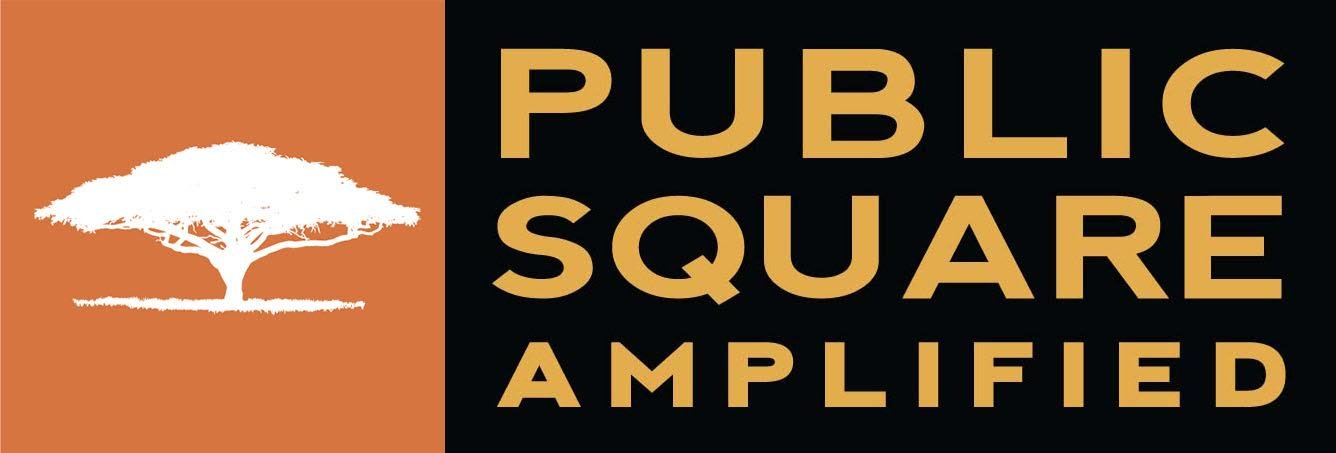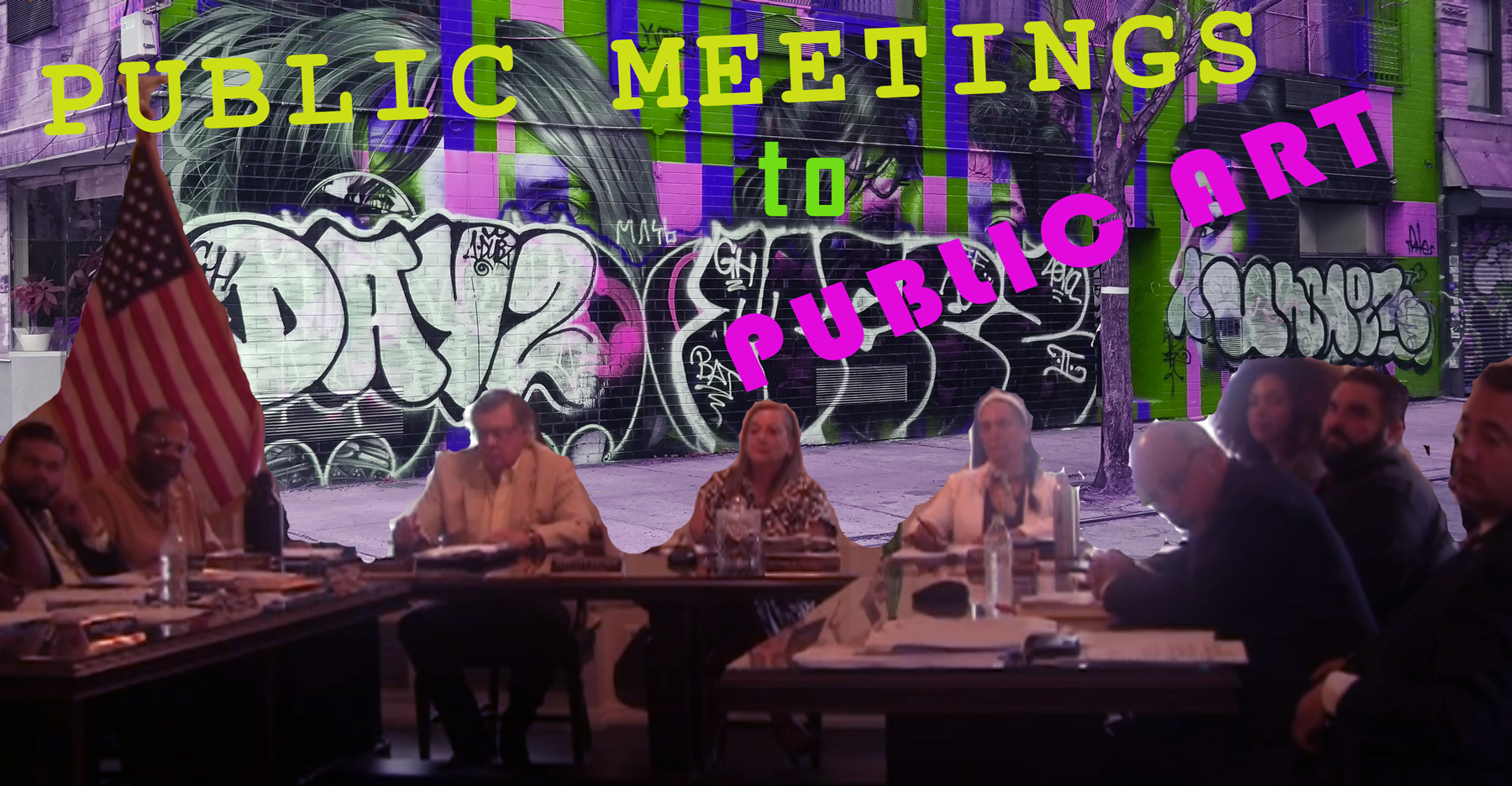A new initiative to document public meetings in New Brunswick, N.J., will use art to build civic engagement
A recent New Brunswick City Council meeting. (Illustration by Public Square Amplified)
Sometime next week or soon thereafter, a few, some or possibly even all public meetings in New Brunswick will have someone new in the audience: A “Documenter.” This is not a character out of science fiction but actually exactly what it suggests: a person documenting the meetings, taking notes on who says what, particularly as what they say relates to any decisions taken.
The Documenters program in New Brunswick is part of a national initiative to help address the problem of the loss of local media outlets. By the end of this year, the U.S. is on track to have lost a third of its local newspapers since 2005: more than two close per week, according to the Poynter Institute. Without these media outlets, information about what is happening in a community is difficult to find at best or unavailable at worst.
But unlike other Documenters initiatives — in cities like Bismarck, N.D., Detroit, Mich., and Cleveland, Ohio — the New Brunswick Documenters will be doing their work with a unique outcome, yet to be determined, in mind: community art.
Debates at city hall have been called lots of things by lots of people — obfuscatory, corrupt, insulting, biased, protective of special interests — among countless others. But the discourse has rarely been called or considered “art.” In New Brunswick, coLAB Arts is implementing the Documenters program to produce journalism by covering the city’s public meetings — and, while providing reports on the meetings to residents and others, also leverage the reporting to inspire and support the creation of art. Ultimately, this art inspires, catalyzes and drives community engagement — a key aspect of the organization’s mission.
On the surface, the Documenters initiative is a straightforward effort to ensure that discussions and decisions at public meetings are documented, exposed, and the information provided to local community residents. coLAB Arts held its first training session for “documenters” — people who will go to public meetings and take notes on the various discussions and decisions — yesterday.
About 15 people took part in the training Wednesday night, which was conducted by Weusi Baraka, program manager of Documenters at coLAB Arts. They included high school teenagers and retirees, and came from diverse backgrounds. For $20 an hour, Documenters will go to public meetings and take notes on the meetings, as well as record them. They will note basic information such as how many people participate, the time and date of the meeting and the condition of the meeting venue.
“We expect you to do your own version of a summary” of the meeting, John Keller, director of education at coLAB Arts, told participants at the training, “as though you were telling your neighbor about it.”
Within 48 hours, they’ll submit their meeting report; coLAB Arts will edit it — to “make sure everything’s straight,” Baraka said — and then publish it on the Documenters New Brunswick website, making it freely available to anyone who wants to use it. A printed summary of meeting reports is also envisaged, Baraka said.
The initiative will “make it easier for the city to share the information and make it easier for the community to access the information,” he said. “We feel like we're like a bridge, a segue between the two.”
Media organizations are welcome to use the reporting, too, he said, and city officials he has spoken have reacted positively to the initiative. The city had not responded to a request for comment by publication of this article.
But unlike about a dozen other organizations implementing Documenters programs in other cities across the country, including Bismarck, N.D., Cleveland, Ohio, and Detroit, Mich., coLAB Arts is taking it farther, engaging with community residents to inspire and support production of art projects using the information.
“As we continue to implement the project, we're engaging the community in how they want this information utilized,” explained Baraka. “We're looking to the community to see how they would like to see it utilized.”
That makes the coLAB Arts implementation of Documenters different. “We’re the only arts organization” implementing a Documenters program, Baraka said.
Journalism has been called art, but many practitioners of the work disdain that description. The journalist generally sees themself first as a recorder and organizer of information.
Traditional journalists have sought to remove themself from the story in pursuit of “objectivity.” Objectivity, however, has fallen out of favor in recent decades; today, traditional journalists aspire to be “fair” and “balanced” when they report news, and will often disclose any relationships or affiliations that might suggest otherwise. Where those are significant, traditional journalists will recuse themselves entirely from covering a story. These rules are hardly ironclad, of course, but these are people who say things like, “If your mother says she loves you, check it out,” after all.
Liberation journalism takes a far different approach, centering social justice, empowering historically ignored and divested communities, and placing narratives in historical context. Liberation journalists emphasize social transformation and movement building over objectivity, working alongside activists and reporting from the perspective of those most affected by an issue; the goal is liberation, not just sharing information.
“coLAB Arts sees a Documenter’s role as one that asks questions for clarification not to agitate,” Baraka said in a text message. “What happens when the information gets back to the community and how they respond to it could mean coLAB Arts partnering with communities together (to) create something outside of Documenters!”
So what kind of art can the discussions and decisions recorded by Documenters at public meetings generate? It’s an open question, Baraka said, and one that the community will answer.
“That’s one of the things we're really excited about — that as we continue to follow this project, we're engaging the community in how they want this information utilized,” he said. “We're a part of the community and we're looking to the community to see how they would like to see it utilized. It could be anything — after school programs looking at it and pulling out pieces for poems, making a mural, a TV show, a blog, or a different kind of art. Really, the sky's the limit.
“And we're trying to make sure we don't limit it to our ideas of art. it could be digital art, cyber, 3D, who knows. It could be a play.”
At the base of the community art that may be created, he said, is the information.
“The civic engagement is the first piece — Documenters is the first step,” he said. “You need the information first, to know what's going on, and then move from there — to support or rally against.”

